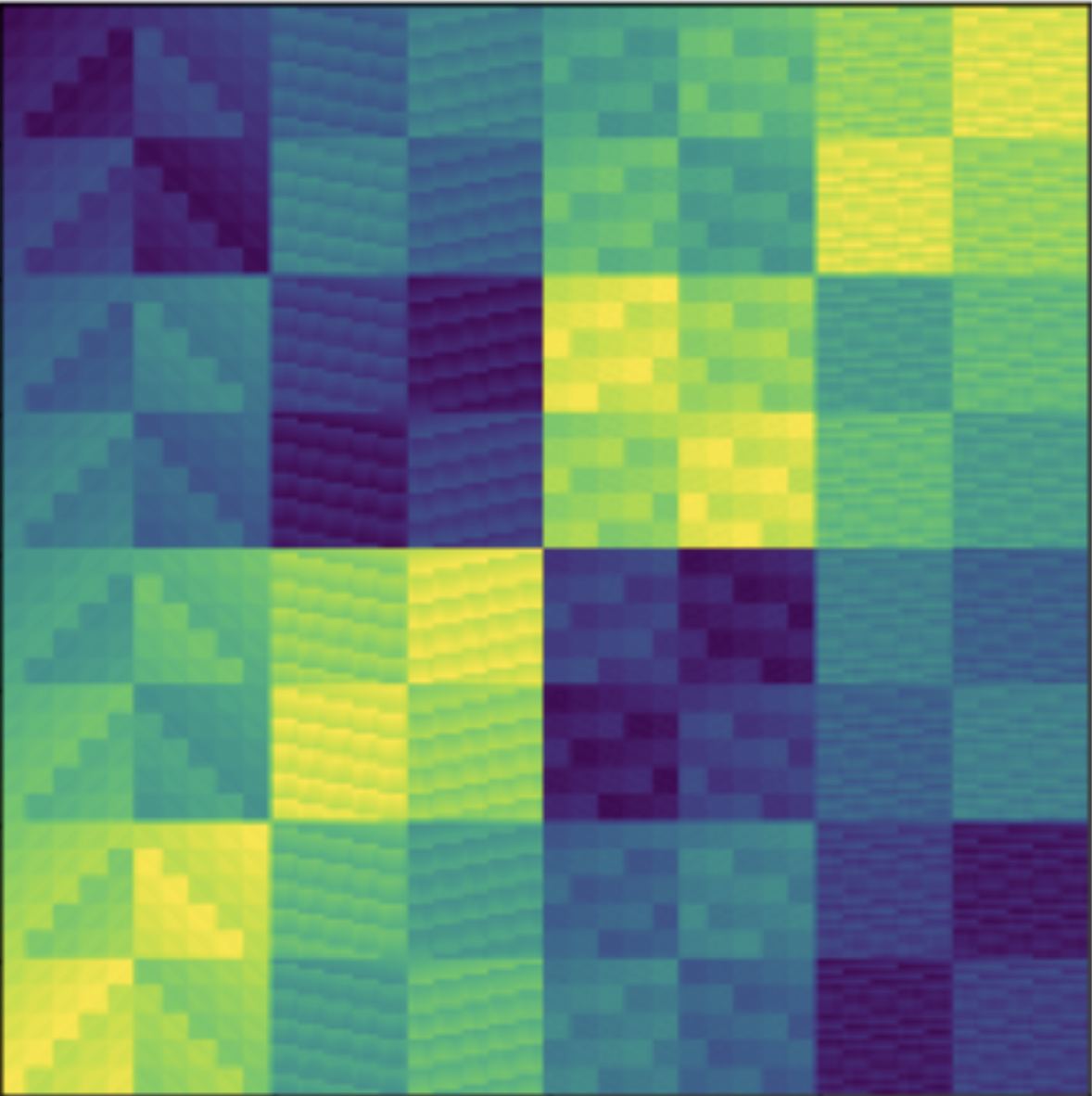This is code to accompany the research paper https://arxiv.org/abs/2110.06084
The code itself has many comments explaining its functionality, but we also show here at a high level the workflow to recreate our results. We proceed in three basic steps.
GAP computations
We use GAP language to do computations over groups and group representations in fourierbasisdecomp.g which writes output information as a string to a text file. Example outputs for some small dihedral and cyclic groups can be found in the data/ folder. The minimal change to use a custom group is to change line fourierbasisdecomp.g.52 from
G := DihedralGroup(8);
To
G := <your-group-here>
And rename the output text file on line get_cayley.g in the same way to set data/
Sage parsing
We then use the Sage script gap_parsing.sage to translate the data into a NumPy binary format more amenable to the later steps in the pipeline. If the GAP output file is formatted correctly no changes should be necessary to this file. However, it may be desirable to comment out lines
Model training with PyTorch
To reproduce the results from our experiments section, simply run all the cells in experiments_section.ipynb. If a custom group is desired, the irrep dimensions, Cayley table, and Fourier basis matrix will be needed. All these should be generated from the previous steps in the pipeline.
Once .npy files are obtained for the necessary data, modify in src/nn_training.py the class methods Group.get_order() and Group.get_irrep_sizes() to include a name for your group together with its order and irrep dimensions respectively.
Then, back in experiments_section.ipynb wherever a group is initalized as
g = Group(<one-of-our-groups>)
Change it to
g = Group(<your-favorite-new-shiny-group>)
And run all the cells to see the results!
Dependencies
Here are installation guides for GAP and Sage. Some of the features we rely on may not be supported in earlier versions, so the latest release is strongly recommended. Some of these dependencies are for visualzations only, so if only the core functionality is needed they can be skipped.
- GAP 4.11.0 or later
- PyTorch 1.9.0 or later
- Numpy 1.21 or later
- Sage
- Pandas
- Matplotlib
- Seaborn
Pretty pictures
 |
|---|
| Cayley table for the nonabelian group $(C_5 \times C_5) \rtimes Q_8$ |